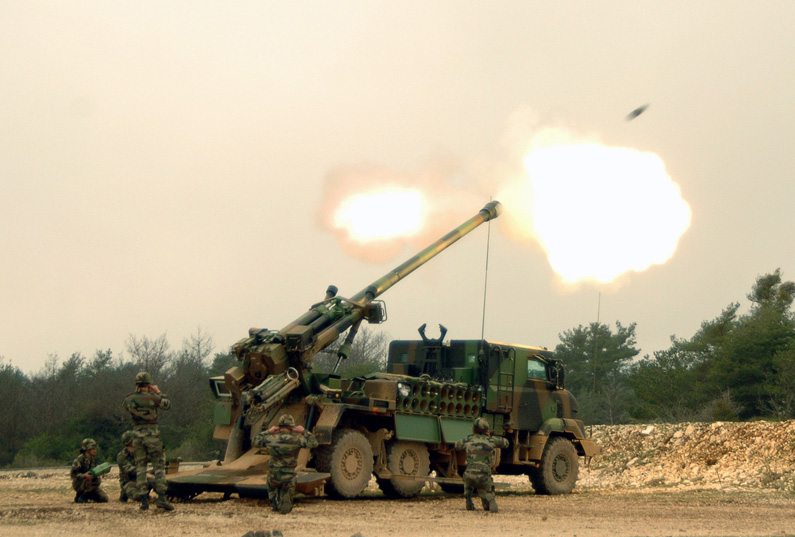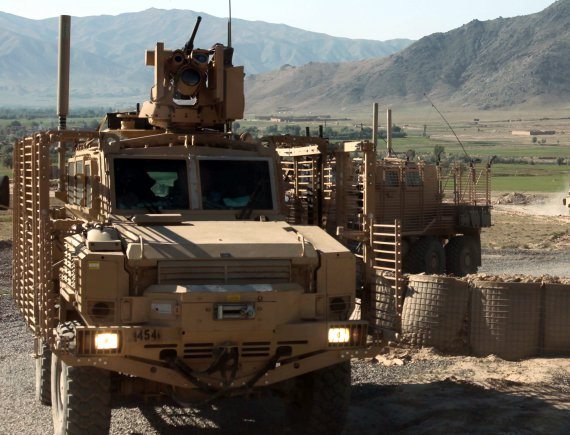The message is embarrassing but clear: with India failing to get its act together to build a strong defence industrial base (DIB) unlike China, it will continue to be the world’s largest arms importer in the foreseeable future.
So, gleeful global armament giants are again lining up to hard-sell their aircraft, helicopters, drones, submarines, howitzers, futuristic infantry combat vehicles, missiles, assault rifles and carbines at India’s biennial arms jamboree here.
Around 250 foreign firms, mainly from the US, Russia, France, Israel, the UK and Germany, and over 55 official delegations will be in town this week for the four-day “DefExpo-2012′ that begins on Thursday.
Over 330 Indian exhibitors, including major ones like Tatas, Punj Lloyd, L&T and Mahindra, will also be there to explore tie-ups and joint ventures with foreign companies as well as DRDO, defence PSUs and domestic shipyards.
The defence ministry has been pushing for JVs and technology transfers to strengthen the DIB, albeit in a haphazard manner, even as it continues to restrict FDI to only 26% in the defence production sector.
Foreign vendors who bag arms deals over Rs 300 crore, of course, have to plough back at least 30% of the contract value into India as “offsets” in the defence industrial, civil aerospace, homeland security and training sectors.
The gigantic $20 billion MMRCA (medium multi-role combat aircraft) project to acquire 126 fighters, in fact, has a 50% offset clause. Offset contracts worth over Rs 50,000 crore are set to materialize over the next two to three years, say officials.
But India, with its fledgling DIB, still remains far away from reversing the current trend of being forced to import 70% of its military hardware and software. This also leaves it vulnerable to supply lines being choked in times of conflict.
Just earlier this month, Swedish think-tank SIPRI dubbed India the world’s largest arms importer, accounting as it did for 10% of global arms imports in the 2007-2011 timeframe to display China. With an aggressive DIB, often propelled by “reverse engineering”, China is becoming a major arms exporter to countries like Pakistan.
But if India inked arms deals worth $50 billion mainly with foreign vendors in the decade after the 1999 Kargil conflict, it will spend well over double that amount in the current decade.
The Army has pointed at huge operational gaps in fields ranging from artillery, aviation, air defence and night-fighting to ATGMs (anti-tank guided missiles), PGMs (precision guided munitions) and specialized tank and rifle ammunition.
After taking it up with defence minister A K Antony, the force now wants to brief the PM since it will need around Rs 41,000 crore to make up just its existing “critical hollowness” in ammunition and equipment, say sources.
THE INDIAN ARMS BAZAAR
Aircraft
India is in final commercial negotiations with French Dassault Aviation for the $20 billion MMRCA project to acquire 126 fighters.
Over $1.5 billion contract for six new mid-air refueling aircraft is in final stage between Airbus Military’s A330 MRTT and Ilyushin IL-78MK tankers.
Acquisition of 75 Swiss Pilatus PC-7 trainer aircraft for over Rs 3,000 crore is awaiting final nod.
Three major follow-on deals with US companies in pipeline:
- Six more C-130J Super Hercules tactical airlift planes (over $1.2 billion),
- four P-8I long-range maritime patrol aircraft (over $1 billion) and
- six C-17 Globemaster-III strategic airlift aircraft (over $2.4 billion).
Helicopters
Army, Navy, IAF and Coast Guard on course to induct over 600 helicopters, ranging from heavy-lift and attack to maritime multi-role and light utility ones, the majority from foreign companies, for over Rs 20,000 crore in the coming decade.
Submarines
Global tender for over Rs 50,000 crore Project-75 India, to construct six advanced diesel-electric stealth submarines armed with both land-attack missile capabilities and air-independent propulsion (AIP), is to be issued soon.
Artillery
Over Rs 20,000 crore 155mm artillery modernization programme to acquire 1,580 towed guns, 814 mounted gun systems, 180 self-propelled wheeled guns, 100 self-propelled tracked guns and 145 air-mobile ultra-light howitzers.










